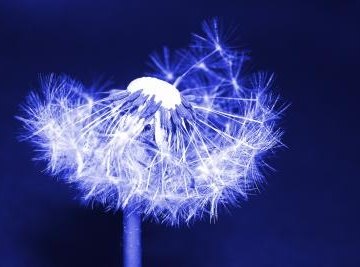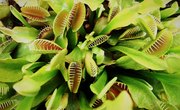
Have you ever looked at a lawn full of dandelions and wondered how they spread so prolifically? Dandelions are either common garden weeds or delicious edible plants, depending on how you look at them. Capable of reproducing in two different ways, dandelions can spread quickly once they are introduced to an area. Understanding their reproductive strategies will help you control them in your yard or cultivate them in your vegetable garden – whichever you choose. Regardless of whether you want more or less of them in your life, knowing how dandelions are propagated will help you manage them on your property. Spreading dandelions is as easy as making a wish while you blow on a seed head, but reducing their populations is a little more complicated.
Types of Dandelions
There are about 100 species of dandelions in the world, but the most common dandelion types in North America are the common dandelion (Taraxacum officinale) and the red-seeded dandelion (Taraxacum erythrospermum). Neither of these dandelion species are native to the United States, and both were introduced to North America from Europe.
Dandelions belong to the sunflower family, Asteraceae. Their name is from a French phrase, dent de lion, which means "lion's tooth." This refers to the toothed edges of dandelion leaves.
Dandelions are beneficial plants to both humans and other species. Producing rich yellow pollen, dandelions are an excellent source of food for bees and other insects. And humans have discovered dozens of culinary and medicinal uses for dandelion roots, leaves and flowers.
About Dandelion Plants
Dandelions are so commonplace, they often go unnoticed. But start to look for them, and you'll find a tough plant that can grow almost anywhere – from the middle of a hayfield to the cracks in city sidewalks. Resilient and deep-rooted, dandelions can survive winters in northern climates and droughts in hot, southern places.
Considered short-lived perennials, dandelions produce a basal rosette of toothed leaves close to the ground. Their deep, strong taproots anchor them to the earth, and these roots can even pull the leaves of the plant below the surface of the ground, according to the University of Missouri.
Yellow dandelion flowers are held up by hollow, leafless stalks that emerge from the base of the plant. As short-day plants, dandelions need 12 hours or less of light each day to produce flowers, which is why they bloom in the spring and in the fall.
Two Ways to Reproduce
Dandelion blooms last only one day, which doesn't give bees and butterflies much time to collect and spread their pollen. However, most dandelion pollen grains are infertile, and dandelions don't require pollination for seed production. Dandelion seeds develop apomictically, which means without fertilization.
The seed heads of dandelions are globe-shaped, and each dandelion plant can produce as many as 20,000 viable seeds, according to University of Wisconsin-Madison. Seeds are spread by the wind, as each dandelion seed has its own pappus, which is the feathery white structure that acts like a parachute, distributing dandelion seeds for miles.
Along with this efficient method of reproduction, dandelions have also developed another way to spread. Their long taproots – which can measure up to three feet – not only anchor them to the ground but can also sprout when damaged. The upper part of the taproot is most likely to grow new shoots when it is wounded, which is called vegetative reproduction. Dandelion taproots can produce two to five shoots when injured, which is one of the reasons it may seem like every time you pull a dandelion, several more sprout up in its place!
References
About the Author
Meg Schader is a freelance writer and copyeditor. She holds a Bachelor of Science in agriculture from Cornell University and a Master of Professional Studies in environmental studies from SUNY College of Environmental Science and Forestry. Along with freelancing, she also runs a small farm with her family in Central New York.
Photo Credits
Photos.com/Photos.com/Getty Images
